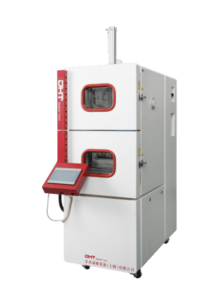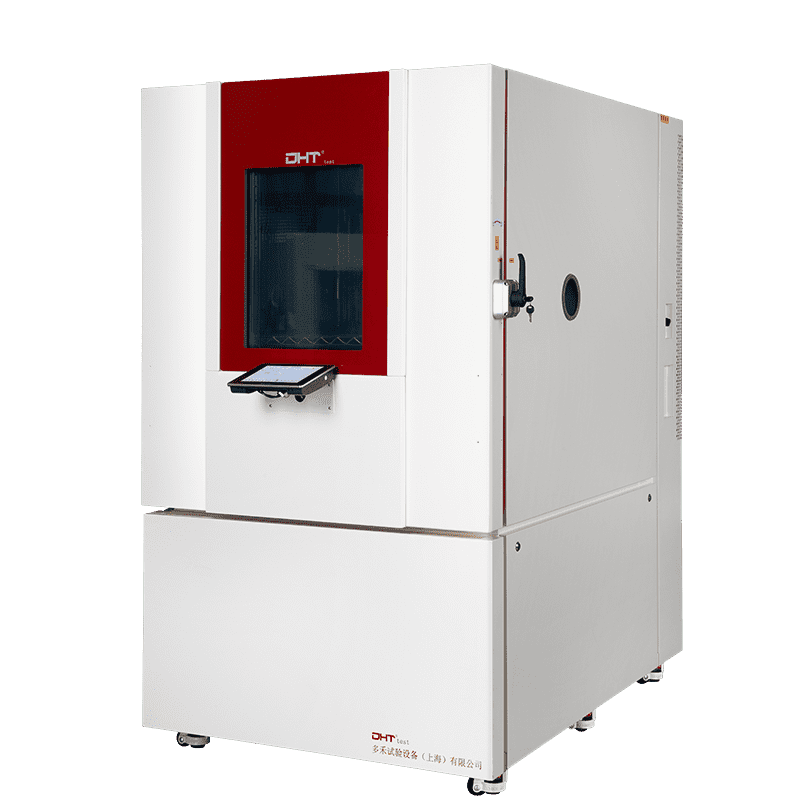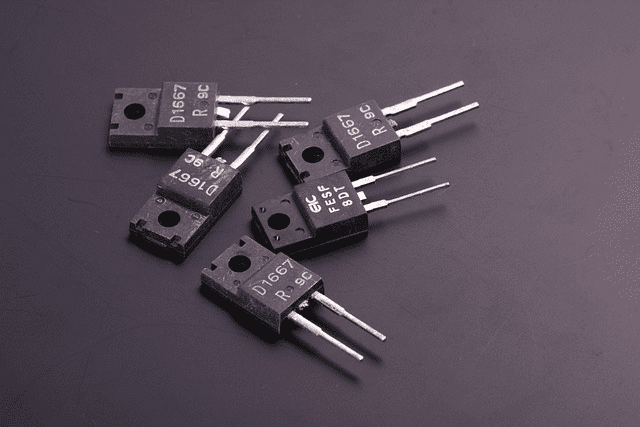Geschrieben von Robin
Leitender Ingenieur, Doaho Test (DHT®)
As satellite components are validated against the harsh thermal shifts of outer space and EV battery packs undergo cold-start stress testing in sub-zero climates, thermal shock chambers have become gatekeepers of reliability across high-end manufacturing. However, data shows that without structured maintenance, key performance parameters degrade by up to 40% within just three years, leading to test deviations that exceed IEC 60068-2-14 tolerance thresholds by 2.7 times.
This article outlines a structured maintenance framework proven to extend the operational lifespan of thermal shock chambers from the industry average of 8 years to over 15 years.

I. Daily Maintenance: Your First Line of Defense for Equipment Health
-
Pre-Start Inspections
-
Check liquid nitrogen pressure to ensure it remains stable at 0.8 ± 0.1 MPa. This supercritical state ensures rapid cooling performance on demand.
-
Verify deionized water conductivity is ≤5 µS/cm to prevent scaling inside the water-cooled system, which could otherwise reduce heat exchange efficiency by up to 20%.
Case in point: A defense contractor experienced a 300% increase in cooldown time to -65°C due to capillary blockage caused by impure coolant water.
-
Chamber Cleaning
-
Wipe the sample trays using lint-free cloths and semiconductor-grade isopropyl alcohol to eliminate metal particulates that can cause micro-arcing.
-
Monitor the internal dew point to ensure it remains ≤-40°C, minimizing condensation risk and preventing intergranular corrosion in the SS304 inner liner.
-
Seal System Diagnostics
-
Use a 0.1 mm feeler gauge to inspect door gasket integrity; replace the fluororubber seal if the gap exceeds 0.3 mm.
-
If door lock pressure sensor readings fall below 15 kN, it may indicate a pneumatic seal leak that requires immediate attention.
-
Run-State Monitoring and Alarm Logging
- Actively monitor system operation during tests. Any abnormal noise, temperature ramping deviation, or alarm triggers should prompt an immediate pause for troubleshooting. All incidents should be logged to support ongoing analysis and system reliability tracking.
II. Monthly Maintenance: Boost Efficiency and Prevent Failures
Thermal Exchange System Optimierung
-
Use fin combs to straighten any deformed condenser fins and restore unobstructed airflow. Ensure the pressure drop across the heat exchanger remains ≤50 Pa.
-
Scan the refrigerant loop with an infrared thermal imager; any segment with a temperature difference exceeding 5°C may indicate partial blockage or low refrigerant levels.
Präzision Sensor Calibration
-
Insert Pt100 temperature sensors into a dry-well calibrator and perform three-point calibration at -55°C, 0°C, and 125°C. Any deviation beyond ±0.3°C requires replacement.
-
Perform step response testing on timing relays. If the switching delay exceeds 0.5 seconds, it could compromise compliance with JEDEC standards.
Mechanical Drive System Lubrication
-
For tri-zone chambers, apply perfluoropolyether lubricant to rail tracks to ensure smooth tray transitions—even at -70°C.
-
Check timing belt tension; if belt deflection exceeds 3 mm across a 10 cm span, re-tension the system to avoid tooth skipping and potential sample collapse.
III. Annual Maintenance: Ensuring Long-Term Stability and System Integrity
- Replace Key Consumables and Wear Components Replace items like door seals, air filters, defrost heaters, fan capacitors, and solenoid valves annually based on usage and wear to prevent “run-to-failure” scenarios.
- System-Level Calibration Partner with the OEM or an accredited third-party metrology agency for full-system calibration—particularly for ramp rate accuracy, temperature uniformity, and thermal fluctuation. This ensures ongoing compliance with global testing standards.
- Firmware and Control System Updates Control logic evolves rapidly. Regularly check for firmware updates for the PLC, HMI, and remote diagnostic modules. If OTA (Over-the-Air) upgrades are supported, ensure systems are updated to improve system security and reliability.
- Comprehensive Safety Checks Conduct a full annual diagnostic on electrical grounding, overcurrent protection, refrigerant pressure relief valves, and alarm interlocks. These safeguards must remain operational even under extreme thermal stress conditions.
IV. Maintenance Culture and Institutional Practices Matter
Beyond technical procedures, embedding maintenance into your organization’s operational culture is crucial:
-
Implement clear maintenance schedules and SOPs, broken down by daily, weekly, monthly, and annual intervals, with designated responsibilities.
-
Maintain detailed maintenance and repair logs, capturing anomalies, resolutions, timestamps, and technician comments to support historical analysis and decision-making.
-
Conduct regular technical training and competency assessments to deepen operator understanding of core systems and common failure modes, reducing human error.
-
Assign dedicated personnel to oversee chamber health, especially in high-throughput testing environments, to prevent maintenance blind spots.
Conclusion: Maintenance Is the Continuation of Equipment Value
Thermal shock chambers often validate high-value product prototypes. Their operational reliability directly impacts the success or failure of entire R&D programs. Strategic, well-structured maintenance not only prolongs equipment lifespan and reduces unscheduled downtime, but also guarantees data fidelity across every test cycle.
As the saying goes in the reliability engineering world: “A well-maintained test chamber performs like new after a decade; a neglected one may fail in three years.” Equipment can be purchased, but stability is earned. By treating maintenance as an essential part of system operation, businesses can fully realize the return on their test investment.
If you’d like to learn more about DHT®’s tailored maintenance programs for thermal shock chambers, feel free to contact our technical team. We’ll help you build a smarter, longer-lasting reliability infrastructure—one cycle at a time.


